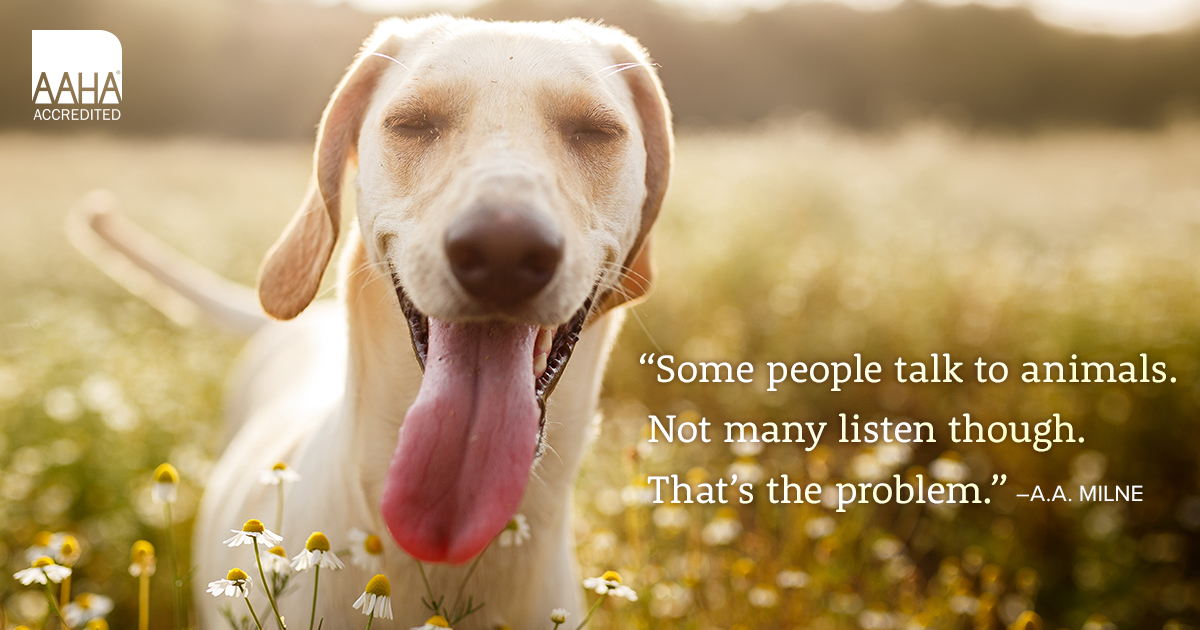
Pet Health Education Handouts
-
Total ear canal ablation and bulla osteotomy (TECA-BO) is a surgery performed to remove the ear canal and a portion of the middle ear. This surgery is performed in cases where the pet is suffering from chronic and unresponsive ear infections. The surgical technique, reasons for performing the procedure, the diagnostic steps, and potential post-op complications are outlined in this handout.
-
The trachea, or windpipe, is the tube connecting the throat to the lungs. Tracheal collapse occurs most frequently in middle-aged to senior dogs (4-14 years), but some younger dogs can also be affected. The most common clinical sign is a persistent, dry, harsh cough, sometimes referred to as a "goose honk". Pets who have surgery for the condition often need medications for life. The prognosis will depend on how well your dog responds to treatment.
-
Transdermal means the application of a medicine or drug through the skin, where it is absorbed into the bloodstream. Relatively few drugs are currently available for transdermal application. The biggest risk with a transdermal medication is that it could be insufficiently absorbed, resulting in inadequate drug levels and treatment. The inside of the outer ear flap (not inside the ear canal) is an excellent area to apply transdermal medications. After you have administered the medication, try to distract your pet from scratching or rubbing the ear for a few minutes by feeding your pet, taking your pet for a walk, or playing together immediately afterward. If your pet is prescribed a transdermal medication patch, your veterinarian will often shave an area to affix the patch.
-
Transmissible venereal tumors (TVTs), often found in genital areas, are spread through contact with other dogs, most often sexual contact. The tumors are usually cauliflower-like in appearance. Diagnosis and treatment is discussed.
-
Your dog has allergies. These instructions have been provided by your veterinary healthcare team to help you treat your dog for his specific allergy. The instructions that relate to your dog are checked.
-
Trifluridine is an antiviral topical medication used to treat viral infections of the eye, such as herpesvirus-1 in cats. Give as directed. Side effects include eye irritation. Do not use in pets with an allergy to this medication. If a negative reaction occurs, please call the veterinary office.
-
Trypsin-like immunoreactivity (TLI) is a blood test that measures the amount of a pancreatic proenzyme called trypsinogen. This measurement correlates with the amount of pancreatic enzymes released into the intestine to aid in digestion. A low measurement indicates exocrine pancreatic insufficiency. Concurrent pancreatitis or tests done shortly after a meal may temporarily increase this measurement to a normal value (false negative).
-
Damage to the tympanic membrane and middle ear infections can be very painful for dogs and cause a variety of clinical signs affecting the skin and nervous system. Diagnosis often requires a thorough ear examination with testing while your dog is under sedation or anesthesia. The treatment methods and prognosis depend on the nature of your dog's condition.
-
An umbilical hernia is a protrusion of the abdominal lining, abdominal fat, or a portion of abdominal organ(s) through the area around the umbilicus. An umbilical hernia can vary in size from less than a ¼” (1cm) to more than 1” (2.5cm) in diameter. Small (less than ¼” or 1cm) hernias may close spontaneously (without treatment) by age 3 to 4 months. If the hernia has not closed by the time of spaying or neutering, surgical repair of the hernia is recommended and prognosis is excellent.
-
The anconeal process is a small projection of bone on the ulna, the longer of the two bones of the forearm. If the anconeal process does not fuse to the rest of the ulna correctly during growth, it causes a condition called ununited anconeal process (UAP). This problem appears to be hereditary mostly in large breeds. When this part of the ulna does not fuse, the elbow joint becomes unstable, causing lameness and pain. Treatment requires surgery. Some form of rehabilitation will improve your dog's chances of making a full recovery from surgery and minimize lameness problems.

